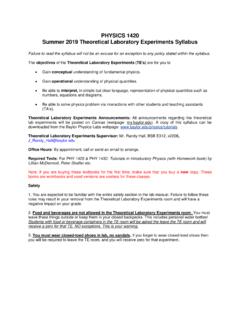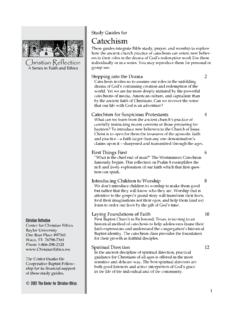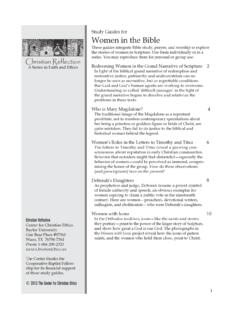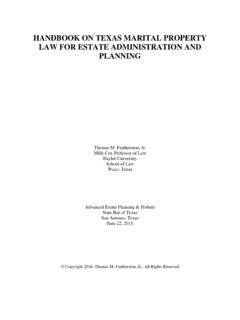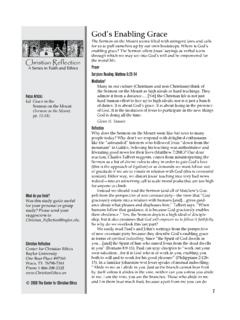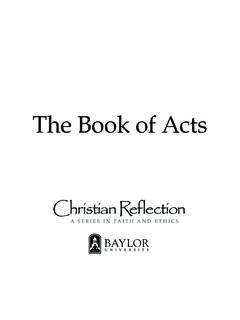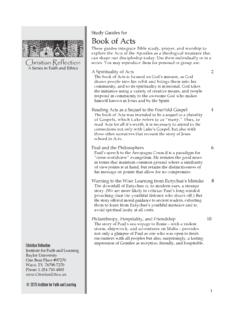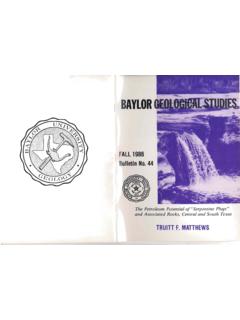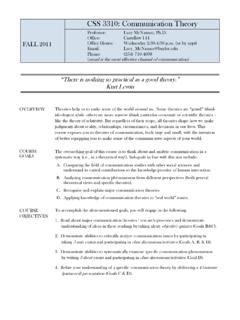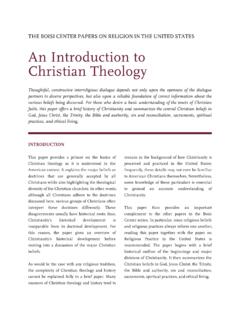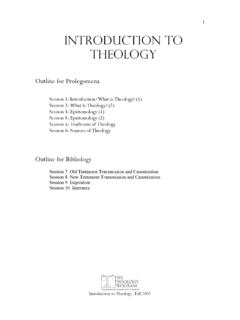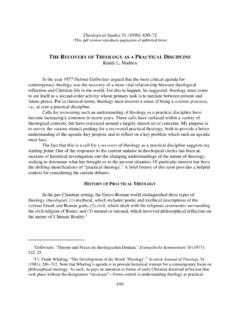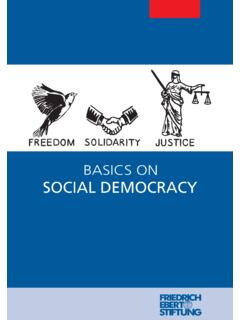Transcription of Who is Mary Magdalene? - Baylor University
1 23. Who is Mary magdalene ? B y M a r y A n n B e a v i s The traditional image of the magdalene as a repentant prostitute, not to mention contemporary speculations about her being a priestess or goddess figure or bride of Christ, are quite mistaken. They fail to do justice to the biblical and historical woman behind the legend. F. or western Christians, Mary magdalene has long been viewed as a repentant sinner, a prostitute forgiven by Jesus and subsequently devoted to him. In recent decades this image has been challenged by feminist biblical scholars who have clarified Mary's portrayal in the Gospels and the early church.
2 After explaining how the traditional image of the penitent magdalene developed and why it does not do justice to the biblical and historical woman behind the legend, I will introduce some new directions in recent magdalene studies. Let's begin with what the Gospel writers say about Mary magdalene . She is mentioned in all four Gospels as one of several Galilean women who followed Jesus and supported him and the other disciples out of their per- sonal means (Matthew 27:55-56; Mark 15:40-41; Luke 8:2-3). Luke 8:2 adds the unique detail that Mary magdalene had been liberated from seven demons, an exorcism attributed to Jesus in Mark's secondary ending (16:9).
3 John 19:25 places her at the foot of the cross with Jesus' mother, the beloved disciple, and Mary Clopas. She, with other women, witnesses the burial of Jesus (Mark 15:47; Matthew 27:60-61; Luke 23:50-24:10). Matthew (28:1-10). and John (20:11-18) portray her as first witness to the resurrection, as does Mark's secondary ending (16:9). In both Matthew and John, Jesus commissions her to tell the other disciples about the resurrection (Matthew 28:10; John 20:17; see also Mark 16:10). The term magdalene is usually regarded as referring to Mary's home- town of Magdala, a fishing center on the Sea of Galilee (although it should 24 Women in the Bible be noted that there is no first-century reference to a town by that name).
4 A. minority view is that magdalene ( Tower ) is honorific, referring to her status as a beacon of faith (St. Jerome, Letter to Principia 127, 255). Her importance is signified by the fact that in lists of female disciples, she is always mentioned first (Matthew 27:56, 61; 28:1; Mark 15:40, 47; 16:1; Luke 8:2-3; 24:10). a case of Mistaken identity The Gospel portrait of Mary magdalene as disciple, supporter and proclaimer of the good news of Jesus bears little resemblance to the western cultural stereotype of the penitent sinner. The notion that she led a sinful life before she met Jesus seems to be the result of confusion between an unnamed woman, identified as a sinner, who anoints Jesus' feet in Luke 7:36-50, and another Mary, the sister of Martha and Lazarus of Bethany, who anoints Jesus' feet when he is dining at their home (John 12:1-8).
5 The two women are described in very different terms: Luke's sinner appears uninvited at a dinner party in Capernaum (Luke 7:1) in the house of a Pharisee (Luke 7:36). The point of the story is the woman's faith and the forgiveness of her sins (7:47-50). In John's story, which takes place in Bethany, Mary is identified as a beloved friend of Jesus (11:5) who anoints Jesus in her brother's home (12:1) in gratitude for the raising of Lazarus, and Jesus connects her act of devotion with his own burial (12:7). Although all four Gospels contain stories of women who anoint Jesus (see Mark 14:3-9; Matthew 26:6-13), none of them is identified as Mary magdalene .
6 However, there are several references in post-biblical tradition to the sisters Martha and Mary of Bethany visiting the tomb and meeting with the risen Jesus, which led some early Christians to conclude that Mary magdalene and Mary of Bethany were the same Eventually, the composite Mary . figure was expanded to include the anonymous sinner of Luke 7:36-50, whose story is told immediately before Luke's listing of Jesus' women disciples from Galilee: Mary magdalene , Joanna, and Susanna (8:2-3). However, it was not until 591 that Pope Gregory the Great authoritatively pronounced that Luke's sinner, Mary of Bethany, and Mary magdalene were one and the same (Sermon ).
7 Although Gregory did not actually call her a prostitute, he interpreted the seven demons of which she had been exorcised as the totality of vices, and asserted that the ointment she used to anoint Jesus' feet had previously been used by her to perfume her body for sensual purposes. Subsequently, the legend of Mary magdalene , the sister of Martha and Lazarus, as a beautiful, vain, and lustful young woman saved from a life of sin by her devotion to Jesus became dominant in western (Catholic) Christianity, although the eastern ( orthodox ) church continued to regard Mary magdalene and Mary of Bethany as distinct saints, and identified neither with Luke's sinner.
8 The Gnostic Mary Both academic scholarship and popular culture have made startling claims about the role of Mary magdalene in a movement in early Christianity Who is Mary magdalene ? 25. known as Gnosticism (from the Greek word for knowledge ). Although Gnostics varied in their doctrines and practices, they were unified by the belief that knowledge or insight into the true nature of the human soul and its relationship to God was the key to salvation. Some Gnostics were more open to female leadership, and to female images of the divine, than other ancient Christians.
9 There are, in fact, several Gnostic documents that portray Mary, some- times specified as Mary magdalene , as a preeminent Gnostic, an enlightened woman who understands the teachings of the Savior better than the male disciples, and who was especially loved by him ( , The Gospel of Mary, The Gospel of Philip, The Sophia of Jesus Christ, and Pistis Sophia). For example, the Gospel of Philip 63 calls Mary magdalene Jesus' companion whom he loved more than the other disciples; the dialogue of the Savior 139-140 refers to Mary as one who understood everything and who showed the Revealer's greatness; Pistis Sophia 19 extols Mary's greatness and spiritual purity.
10 Although Mary's authority, understanding, and relationship to Christ are highlighted in these documents, the notion that Mary magdalene was a Gnostic heroine needs qualification. In fact, many of the references to the Gnostic Mary do not actually refer to her as magdalene ; this is even the case in The Gospel of Mary. The Gnostic Mary is actually a composite figure who partakes in characteristics of both Mary magdalene faithful disciple and resurrection witness and Mary of Bethany, who learns at the feet of Jesus (Luke 10:38-42), is beloved by him (John 11:5), and who is commended by him (Luke 10:42; John 12:7-8).
